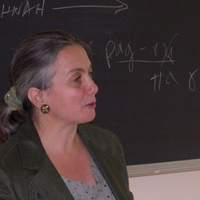
The talk will discuss parabiblical narratives concerned with the topoi of the origins of human body and soul, as rendered in some Judaeo-Christian Apocryphal Writings and Indo-European folklore traditions. The focal point of discussion will be the strong reciprocity between cosmogonic narrative templates (i.e. accounts concerned with the creation of the Universe — that is, the macro-Cosmos) and the anthropogonic narrative templates (i.e. accounts concerned with the creation of Mankind — that is, the micro-Cosmos). In this, the macro-cosmic scheme appears to be a model for shaping the conceptual framework of the micro-cosmic one. Legends about the creation of the human body and soul are seen as a symmetrical counterpart of legends about the origins of the elements of the Universe. The human body is thus imagined as a product of amalgamation of terrestrial and celestial elements.
According to some Judaeo-Christian apocryphal sources, the body of the first man is created from several components: the flesh originates from the dust of the earth, the bones from stone, the blood from the sea, the thoughts from the clouds, the eyes from the Sun, and the breath from the wind. Having composed the human body as a perfect image reflecting the glory of the Universe, the Creator breathes into the motionless matter a living spirit in order to vivify it; this is how the eternal soul entered the flesh, in which it is supposed to dwell until the end of human life-span, after which it is destined to return to its Creator. Thus the nature of primordial man appears to be composed of a cluster of elements, with his body becoming a micro-model of the “materiality” of the Universe. This pattern, as will be demonstrated during the discussion, is followed in the anthropogonic scenario revealed in a series of parabiblical apocryphal writings and in oral literature. In these types of texts, the top of the human body (the head) is thus associated with the higher strata of the Universe (the sky), and the corpse (the rest of the human body) with its lower strata (the earth). Adam is hence envisaged as the perfect final product of Creation: his body, designed by the divine Wisdom, emerges from the dust and stones of the dry earth, which amalgamated with the waters of the sea into a single entity. The paper will focus on evidence extant predominantly in Slavonic traditions, comparing and contrasting them to other Judaeo-Christian parabiblical writings and Indo-European folklore myths of origins.